Olives are a bit like Marmite, in that you either love them or you hate them. But if you love Olives, there are two popular varieties that often come to mind: black olives and green olives. These olives not only differ in appearance but also in taste and health benefits.
Understanding the differences between black and green olives can help you make the right choice when selecting olives for your recipes. I have compared the taste and benefits of black olives and green olives, exploring their distinct characteristics and uses in cooking. Whether you’re a fan of the rich, meaty flavor of black olives or the more bitter taste of green ones, this guide will help you navigate through various types of olive plants and select with an informed decision.
Before we dive into the differences between black olives and green ones let us have a close look at each variety individually.
What are Black Olives?
Black Olives are fully ripe (or overripe) fruit on an olive tree. When picked unripe its color is almost yellowish-green however as it ripens further it turns yellow then finally maroon-black. Black Olives vary in size depending on type such as Kalamata from Greece; Nicoise from France; Gaeta which is an Italian variant among others.
Black olives have a rich, meaty flavor and a smooth, buttery texture. They are often canned or preserved in oil to extend their shelf life. Canned black olives are widely available and commonly used in various Mediterranean dishes.
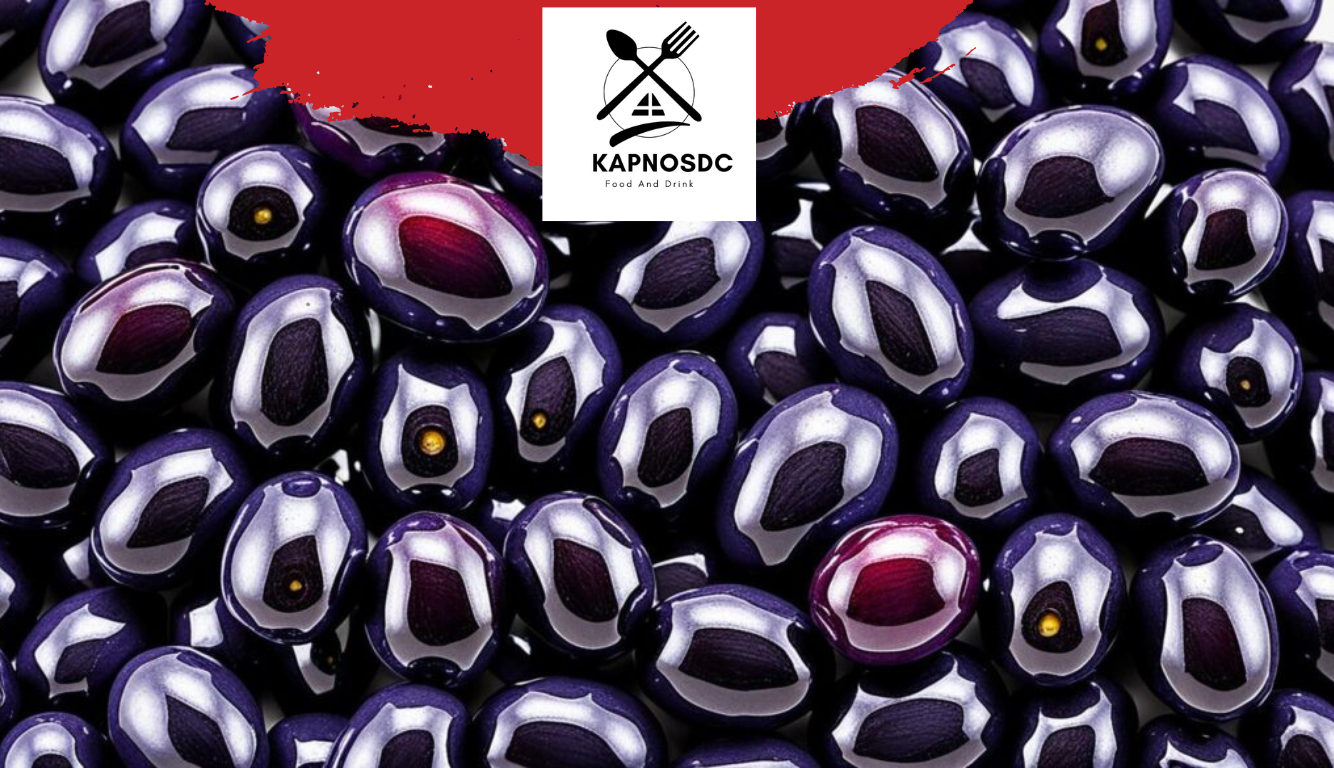
Canning black olives helps to preserve their flavor and ensures that they are ready to use at any time. The versatile flavor of black olives makes them a favorite ingredient in salads, pasta dishes, pizzas, and spreads. Whether you’re tossing them in a Greek salad or using them as a topping on a homemade pizza, black olives add a delicious savory touch to any dish.
Canned black olives help to keep their flavor intact for future use. Black olives are perfect inclusion in different dishes including salads, pasta plates, pizzas among other foodstuff like dips.
What are Green Olives?
Green olives are harvested before they are fully ripe. Green olives are usually larger, and harder compared to Black olives. They also taste a bit more bitter. Hence they are used in drinks like Martinis and other cocktails wanting a sour or bitter flavor. I particularly like them for stuffing soft cheese or jalapenos into. I also cure them in brine or salt to reduce the bitterness.
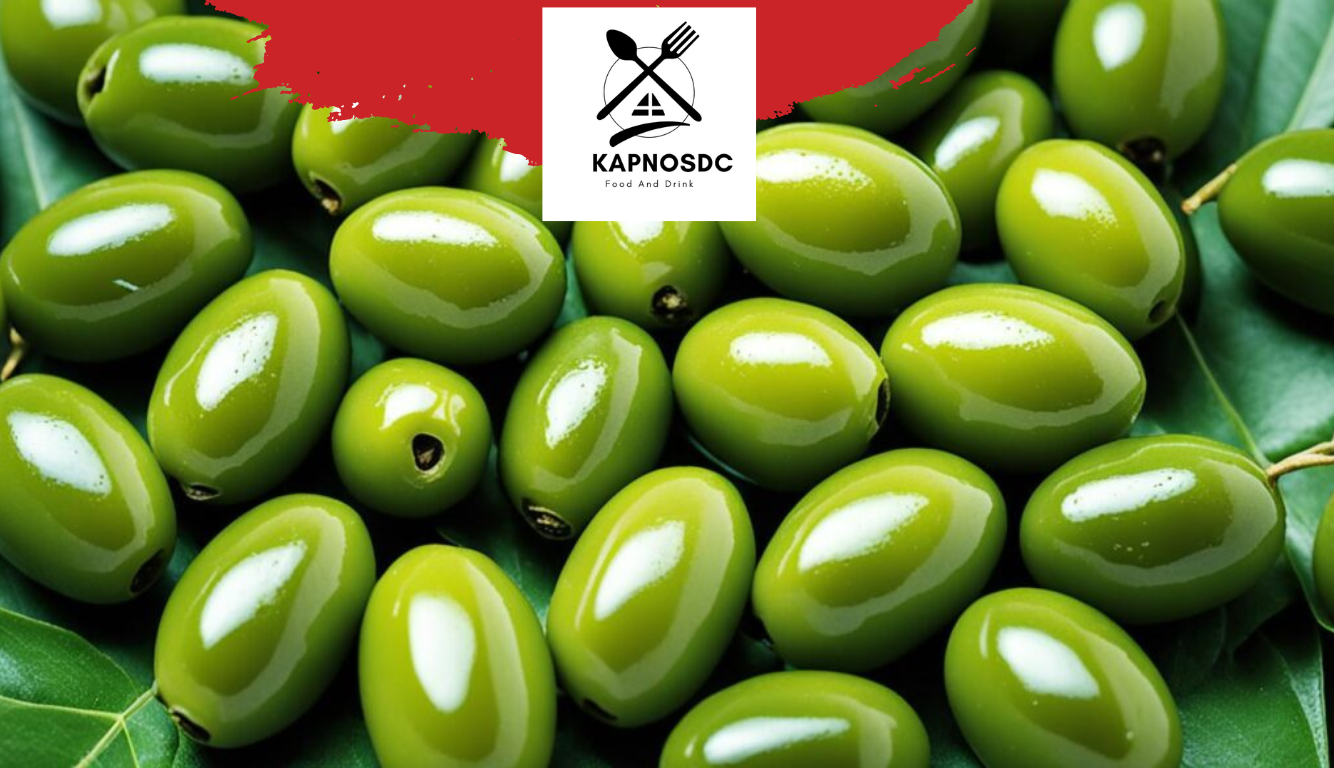
What is the difference between black and green olives?
As summarized above the only real difference therefore is in ripeness. Green Olives are not fully ripened when picked from the Olive trees, and Black Olives are fully ripe. This means as the Olives ripen they reduce in size but also increase in sweetness and darken. The downside is Black Olives do not last as long so need to be preserved, or canned.
So black olives have a sweeter, smoother taste, while green olives are more bitter and firm. The curing process also plays a role in the taste of each type of olive.
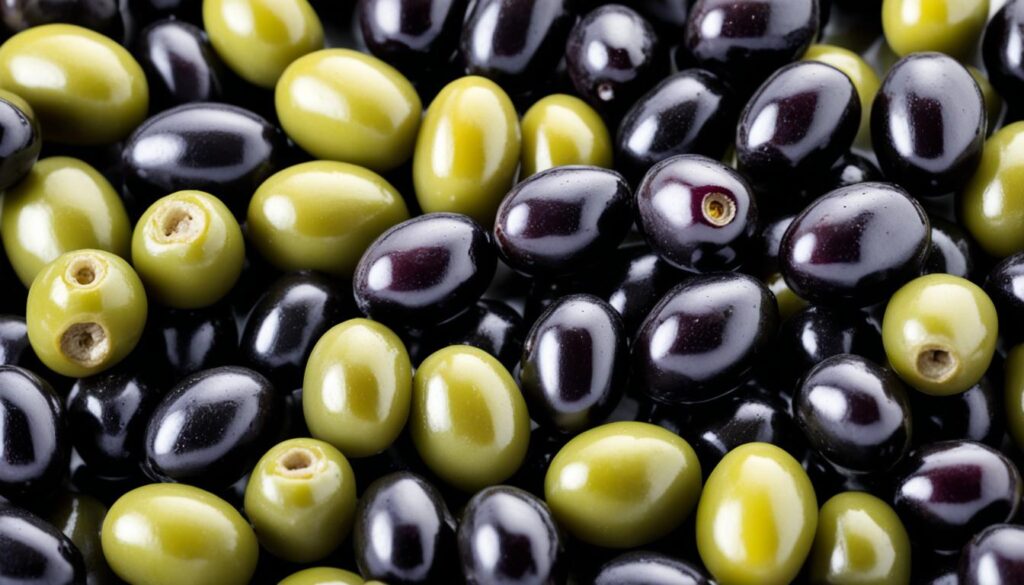
Why are black olives always canned?
Black olives are a delicious addition to many dishes, but have you ever wondered why they are almost always found in cans? The answer lies in their shorter shelf life compared to green olives.
Due to their high degree of ripeness, black colored pickings spoil easily. Black olives will go bad faster as they are fully ripened as compared to green olives due to higher moisture content and thus increased susceptibility to bacterial infection and rotting as a result of decay.
To keep black olives tasting like they should, canning or preservation becomes necessary. This is because it extends their shelf life by a great deal to ensure that they can be consumed throughout the year.
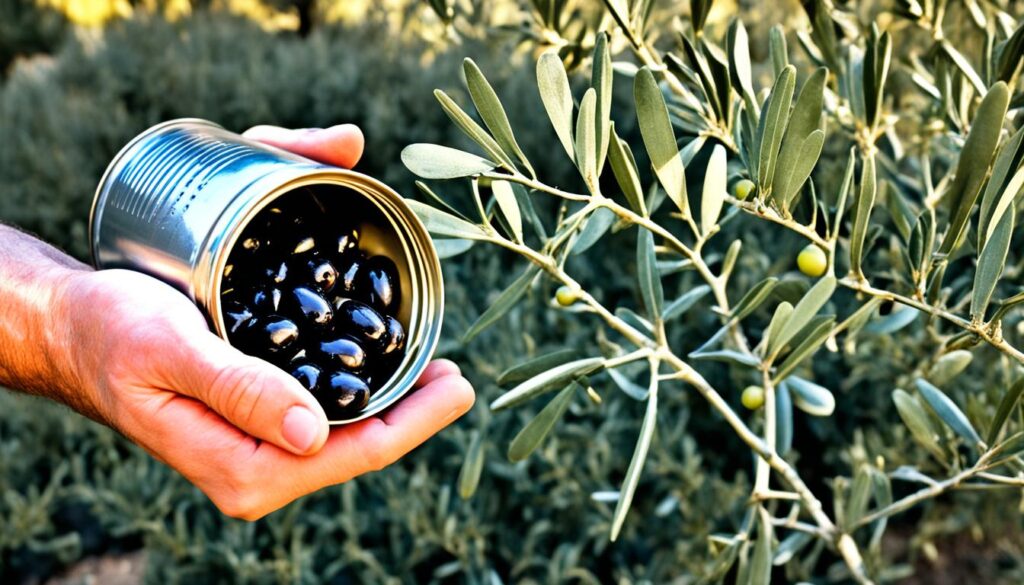
Canned black olives are not only a convenient option but also offer several benefits. They are ready to use straight from the can, eliminating the need for additional preparation time. Whether you’re adding them to a salad, pizza, or incorporating them into a dip, canned black olives provide a quick and easy solution for cooking and snacking.
Do black and green olives taste the same?
Although both belong to olive species, Black and Green olives have distinct tastes/flavors which make them different from each other with regard to this. It’s pretty noticeable how different green olives are from black ones when it comes to the taste buds’ experience.
Black Olives have sweetness with mild taste and smooth, buttery texture. They tend to be more delicate in flavor giving dishes a richer feel. On the opposite side, green colored Olives bring about boldness as well as slightly acrid taste with a firmer texture.
Furthermore, flavors of olive vary depending on particular variety employed as well as curing done during the processing stages. Each type has its own special characteristics that impact upon its overall flavor profile. Additionally, factors such as soil condition , weather patterns , harvesting methods may influence how olives taste.
Ultimately some people prefer sweet softness of black olives while others appreciate bitterness and the firm texture found in green olives.
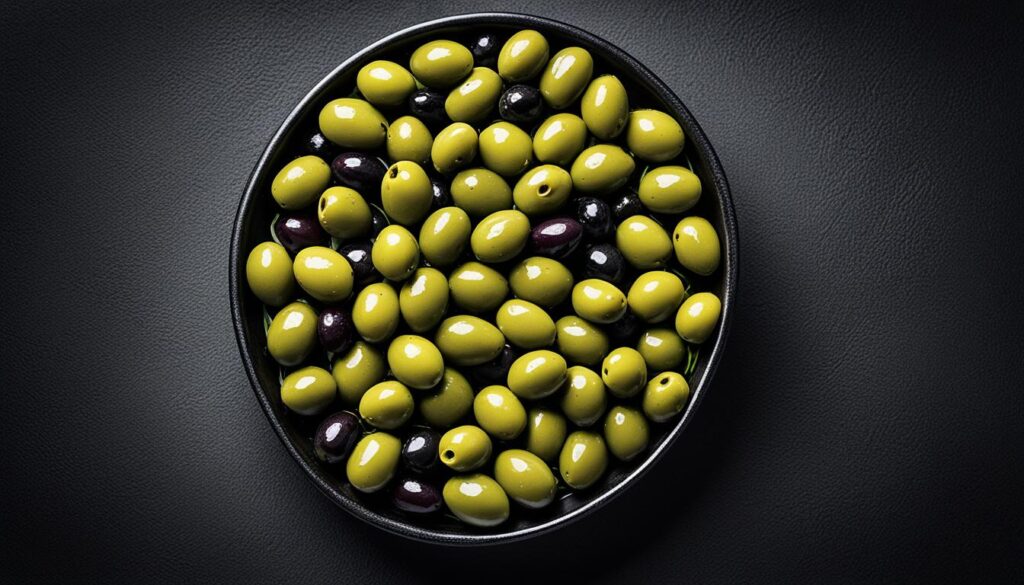
Are Black or Green Olives Healthier?
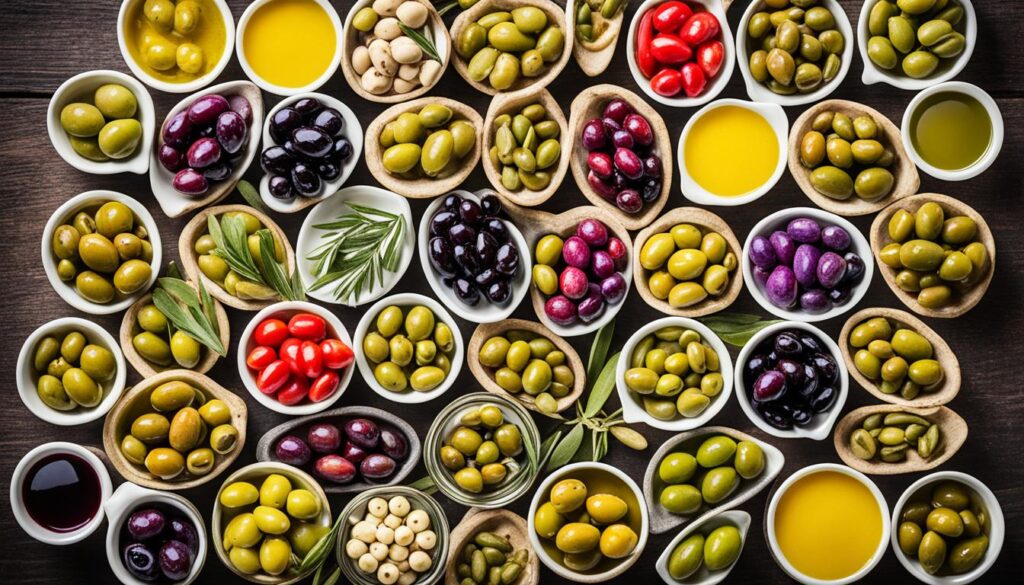
Black olives and green olives provide many essential nutrients that are good for the body. By adding olives to your diet you will improve the nutritional value of your meals and also promote different body functions.
Sweet in flavor with smooth texture black olives can contribute toward heart-healthiness as well as exhibit anti-inflammatory properties. They have high amounts of monounsaturated fats which have been associated with lowered levels of cholesterol and minimized risk of heart disease.
On the other hand, bitter tasting green olives are full of antioxidants plus Vitamin E that help to combat oxidative stress while safeguarding cells from harm. Furthermore, green olives are among others an excellent source of iron and calcium which plays significant role in maintaining strong bones plus overall body function.
It is important to note that they contain a lot of salt so those people who strictly follow their diet need to eat them moderately.
In conclusion, whether one likes black or green ones; both varieties must be considered due to their healthy nature when enjoying a balanced diet.
What can I make with black olives?
There is a wide range of possibilities when it comes to the use of black olive in cooking. From Mediterranean cuisine enthusiasts who appreciate dark olive’s distinctive savory flavor profile; there are numerous scrumptious recipes you should try out today.

Greek Salad: Toss together fresh crisp lettuce, juicy tomatoes, cucumber slices, red onion, crumbled feta cheese, and a generous amount of black olives. Drizzle with olive oil and sprinkle with oregano for a refreshing and healthy salad.
Pasta Puttanesca: Cook spaghetti or your favorite pasta until al dente. In a pan, sauté garlic, red pepper flakes, and anchovies in olive oil. Add black olives, capers, diced tomatoes, and simmer until the flavors meld together. Toss the cooked pasta with the sauce and garnish with fresh parsley.
Mediterranean Pizza: Spread tomato sauce on your pizza dough and top with mozzarella cheese, sliced bell peppers, red onions, black olives, and crumbled feta cheese. Bake until the crust is golden and the cheese is bubbly and melted.
Olive Tapenade: Blend black olives, garlic, capers, anchovies, fresh herbs like parsley and basil, and a splash of lemon juice in a food processor until chunky. Serve the tapenade as a spread on bread, crackers, or as a flavorful addition to sandwiches or burgers.
Olive Stew: In a large pot, sauté onions, garlic, and your choice of vegetables such as bell peppers, zucchini, and eggplant in olive oil. Add black olives, diced tomatoes, vegetable broth, and herbs like thyme and rosemary. Simmer until the vegetables are tender and the flavors meld together. Serve the stew with crusty bread.
These are just a few ideas to get you started. Feel free to get creative and incorporate black olives into your favorite recipes.

